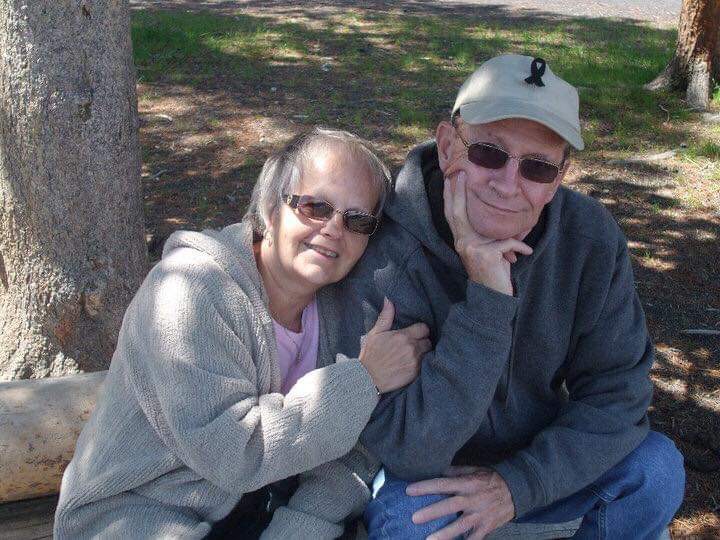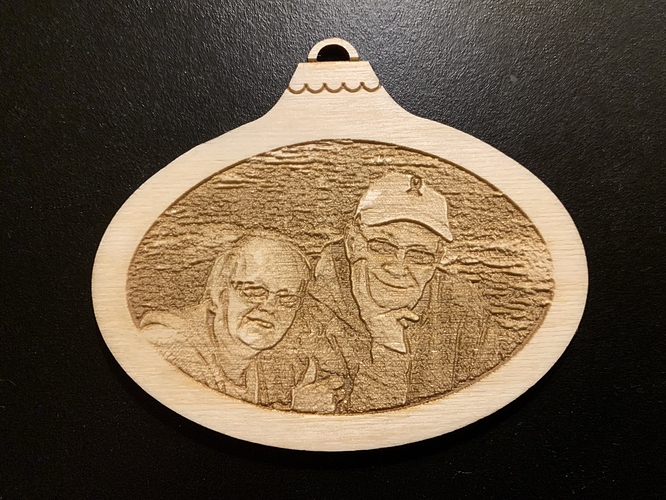I get a lot of request for engraving pictures of people, usually not really suitable for engraving and poor quality ones (pictures not the people  )
)
Now, i know that i need to experiment with power, speed, dpi and materials (any tips on this also helpfull), but what im mostly interested in is a process of preparing pictures for engraving?
What software do you use? Some online tool would be great so i can use it from any PC (i use multiple PC a day). What im looking for is a quick and easy way to get above average results.
I doubt you’re alone in this. ![]()
Honestly, once you have your DPI, power, and speed settings right, any image with good detail and contrast should be engraveable. I find often that people try to go both too fast, and with too high a DPI for their hardware, not understanding that both of these things are hardware limits.
These were done from an image downloaded from the net, with no editing whatsoever (selected somewhat arbitrarily, but worth noting that it has good contrast and definition to begin with):
Those look awesome.
My trouble is that pictures i get are usually taken by amateurs (myself included), so some conversion or editing is required IMO.
I just found some phone apps that convert pictures into a sketches, and the difference is quite noticeable.
Some other tips like that maybe? Are there some online tools that could ease the process?
Ha! I think we all are looking for that magic bullet for our work lives!
If you are using Photoshop, this thread has some good information. They summarize some quick steps called the Gold Method for prepping a photo to engrave well. If you want the steps to be automated, there is an action you can download and install in your Photoshop folders.
Now that both you and Oz pointed it out, and now that i have read that sentence again, i cant help but laugh at myself ![]()
Thanks for helping, ill check that out.
I’ve honestly never been impressed with the output from PhotoGrav - I find it really heavy-handed. It’s good in that it will take anything and make it recognizable, but it rarely looks like “a photo” to me.
How do you process your photos to engrave? Please share. The only editing program I have is CorelDraw X8
I’m by no means experienced, but I’ve found that I get the best results by converting to black and white with a good dithering algorithm, something most graphics programs can do. It takes the entire greyscale out of the equation, and makes it all “dot or not”.
The jarvis dithering option in LightBurn is my go to setting. It seems to do the best job, and is super easy to use.
I prefer Floyd-Steinberg or Jarvis, but one needs to test the different options on each picture for best results.
LightBurn supports several different dither methods, including Floyd Steinberg (just called “dither” in LightBurn), Jarvis, Atkinson, Ordered, and Newsprint.
Bottom line is, all machines are different. What works for one person does not mean it will work for all. To tell the truth, learn your machine by trial and error, do your research, and find what works for you. I don’t think anyone is going to say what they may have spent months and $$$$ perfecting. LightBurn forum has some very good articles on things like this, Laser parameters grayscale matrix. Check it out.
I don’t really understand the value of photograv. What does it do that you can’t do with LightBurn or any graphics editor? I’d like to think there is something special about it since they charge $400 but I don’t see what that is.
Apparently, some people find $400 of value in Photograv’s ease of use, speed to task completion and less need to think. If you use Photoshop, there is a free set of actions that gets close to Photograv if you follow the Google search trail.
I would like to put my vote in for changing the text within LB from “dither” to Steinberg or Floyd Steinberg or some combination of Dither/Steinberg or Dither (Steinberg) or similar! People who are learning via books and youtube will be familiar with a Steinberg reference so they will appreciate seeing it when trying to make a choice. Dither alone is not descriptive enough.
When is dither a useful option? So far I have not found an image that looks better with the dither option. Jarvis and Threshold seem to be best for images I am doing.
It varies based on the image itself and each person’s own workflow for how they prepare the image.
I have nothing to do with the group, but I ran across it the other day and joined it. It’s called Dude With A Laser, the main guy Sean has created a script that runs on Corel Paint Shop Pro, from the pictures it does awesome stuff. One of the members was offering that Corel product with a discount for $25.00. Like I said I haven’t used either one of those, but proof is in the pudding so they say. Might want to look into that, I don’t do a lot of photos, but I thought about buying the program since it’s cheap and try the script for the fun of it.
Many people have bought Photograv in the past because it was one of the first programs to automate the photo to laser conversion process. Many others also used paid programs like Vector Magic to vectorize their images for lasering. The brilliant team at Lightburn have rendered the use of both of those types of program redundant for many if not all those people; and will soon make even the now rarely necessary use of Coreldraw or Photoshop for design work an even less used option. But remember that lightburn is only just over a year old and was not available to many of the grizzled veterans who had to learn fluent Chinglish in order to miscommunicate with Chinese Laser manufacturers and suppliers, who often had no real knowledge of the machines they were selling and even less of the software that ran them using dongles and other arcane devices and software about as intuitive as quantum physics! . Lightburn is simply the best money I’ve ever spent on my lasers .

